Someone said to God, “Yes…You are the supreme being. You have the entire existence in yourself. That’s true, but I have You in my heart! Who is supreme now?!” [with sense of humour but not lacking certain truth]
From Periya Thiruvantha:di
The same someone said to God, “Oh Lord Srimannarayana! your devotees’ devotee’s grace is enough to relieve me, the previous and upcoming generations from the bondage of karma.”
From pylam sudaroli part, 3.7 of Thiruvaimoji
Who is the ‘someone’?
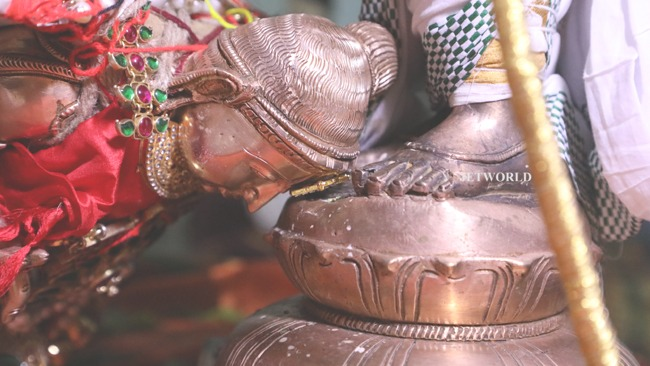
The someone is Namma:lwa:r. This kind of emotion called bhakthi experienced by Namma:lwa:r is the essence of Ve:das.He expressed it as an outpour of over 1000 verses split as four main sections. (Thiruvaimoji – 1,102 verses, Thiruviruttham – 100 veres, Thiruva:siriam – 7 verses, and PeriyaThiruvantha:di – 87 verses).
If Ve:das is a mango tree, ve:da:ntha is its mango. The tree has so much more than the fruit such as the leaves, branches, roots etc. However, the experienceable essence of the tree is its fruit. Therefore, ve:da:ntha is the essence of Ve:das.
Where do I learn Ve:da:ntha from?
Ve:da:ntha is available in Upanishads as theory.The same is shown practically as the life of a:lwa:rs like Namma:lwa:r. The Upanishads (unauthored, governing divine sounds heard by sages and delivered down in lineage to disciples) and the Divya Prabandhas (composed by a:lwa:rs as an outpour of God’s grace and relished by everyone) are together termed UbhayaVe:da:ntha.
Ancient history suggests that those who truly desire to learn such knowledge sought it from rushis with utmost servitude and dedication. Recent history demonstrates that HH Sri Pedda Jeeyar Swamiji and T.K. Gopalacharya Swamiji organised regular Ubhaya Ve:da:ntha sabhas, public meeting of scholars where identified scholars spoke on the designated topics to enlighten the attendees and to rejoice sharing Ve:dic wisdom with each other.
Can I listen in to all discourses that are available and accessible?
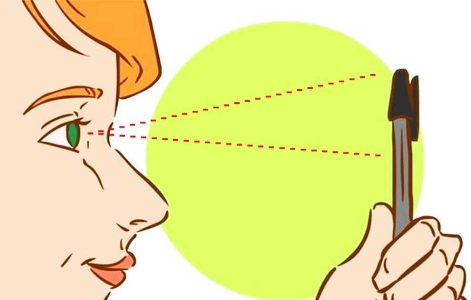
Make sure your focus does not deviate from the essence, Ve:da:ntha. Learn it in a systematic and prescribed way. A person has two eyes, but only sees the same image. Isn’t it? If the two eyes are sending signals to brain which sees multiple images, the person’s vision will need correction. Similarly, you can listen and read from various sources as long as they are able to give the intended target knowledge, Ve:da:ntha. This can only attained when you follow a prescribed way.
What is the prescribed way?
The prescribed way to learn Ve:da:ntha is use all available sources such as Ithiha:sa, Pura:na, Smrithi and Sruthi, however one should not deviate from the core message, the experienceable essence as described earlier.
UbhayaVe:da:ntha (Upanishads and Divya Prabandhas; accept these where they do not conflict with Ithiha:sa)
Ithiha:sa (Ramayana, Mahabharatha etc; accept where they do not conflict with Smrithi)
Pura:na (Vishnu Purana and others; accept it where they do not conflict with Ithiha:sa)
Smrithi (Dharma Sa:sthra; accept it where it does not conflict with Ve:das)
Sruthi (Ve:das; learn essence of Ve:das through Upanishads and Divya Prabandha:s)
Is there any physical base that is the centre for all the wisdom so I can contribute and stay connected?
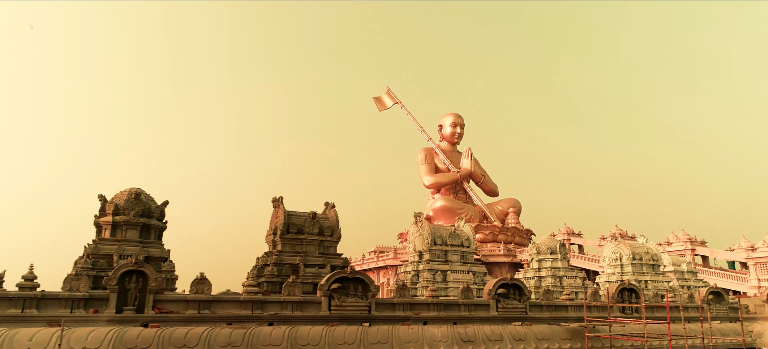
Temple is the base for all scriptural and spiritual learning. These learnings enable a person (including administrators) to morally abide by certain principles as he/she leads life. The activities and the celebrations in the temple reflect the ultimate thatthva and the relation, limitations for all of we to attain Him. However, the temples must be run by the eligible priests and eligible team.
Who is considered an eligible priest or temple administration team?
Sampradaya, the denomination (as referred to by Article 26 of Indian constitution) is that which is passed onto you by the Elders from generations and is a proven virtuous and righteous lifestyle. As long as you are part of the sampradaya and are working towards practising it and carrying it forward to next generation, you have the right to run it as per its norms (even with no intervention from government).
Is there any certification to obtain for being considered eligible?
Every devotee who has taken part in the concluding prayers in any Sri Vaishnava sampradaya temple would have chanted or at least heard the following:
ra:ma:nuja:cha:rya divya:jna vardhatha:m abhivardhatha:m
digantha vya:pine: bhu:ya:th sa:hi lo:ka hithaishini
May Ramanujacharya’s order/command be put in practice forever and ever as it bestows well being of the entire world
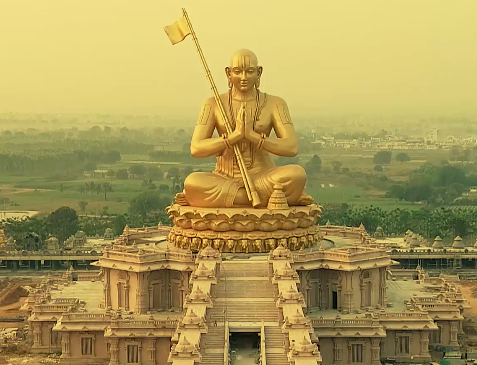
The certification to be considered eligible for being part of temple administration is to abide by Ramanujacharya’s command.
What is his command?

Ramanuja’s command: Any responsible and accountable duty in a temple must be exercised by only those who believe and practise the sampradaya followed in the temple. The sampradaya can be anything – Vaishnava, Shaiva, Sha:kthe:ya or any other. Let the temples, centres of philosophical establishments flourish as they are the only reliable and proven means to instill the discipline required for individual and societal enrichment at all levels without compromising another.
Let the entire system support and nourish the experienceable essence, Bhakthi in all of us. God and Me – Let this bond flourish. This bond alone is forever permanent. It alone helps us evolve in understanding God’s bond with every other being in the world thereby respecting the entire existence.
– From the discourse of HH Chinna Jeeyar Swamiji
– SVAAS First Year Anniversary Celebrations
– 28th, 29th, 30th October 2021
SVAAS, Sri Vaishnava Aagama Sampradaya Seva Samithi, named by Gudimella Murali Krishnamachari Swami, the presiding priest of Sri Sitha Ramachandra Swami, Badharachalam organised ‘The UbhayaVe:dantha Scholar Meet’ as a way to seek blessings and guidance from HH Sri Chinna Jeeyar Swamiji and all the Elders. Mahamahopadhyaya Sasthra Ratnakara Sriman Dr.Samudrala Venkata Rangaramanujacharya Swami chaired the Scholar Meet.
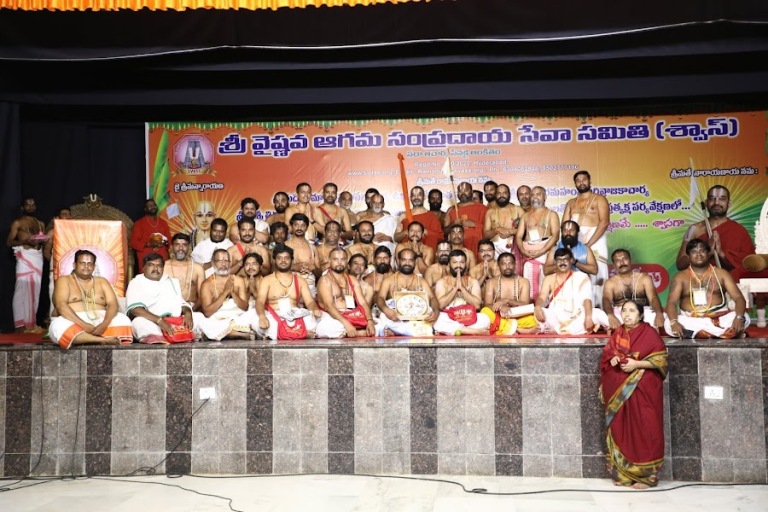

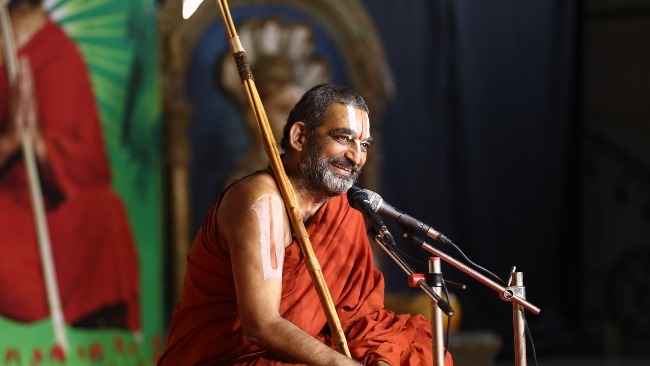

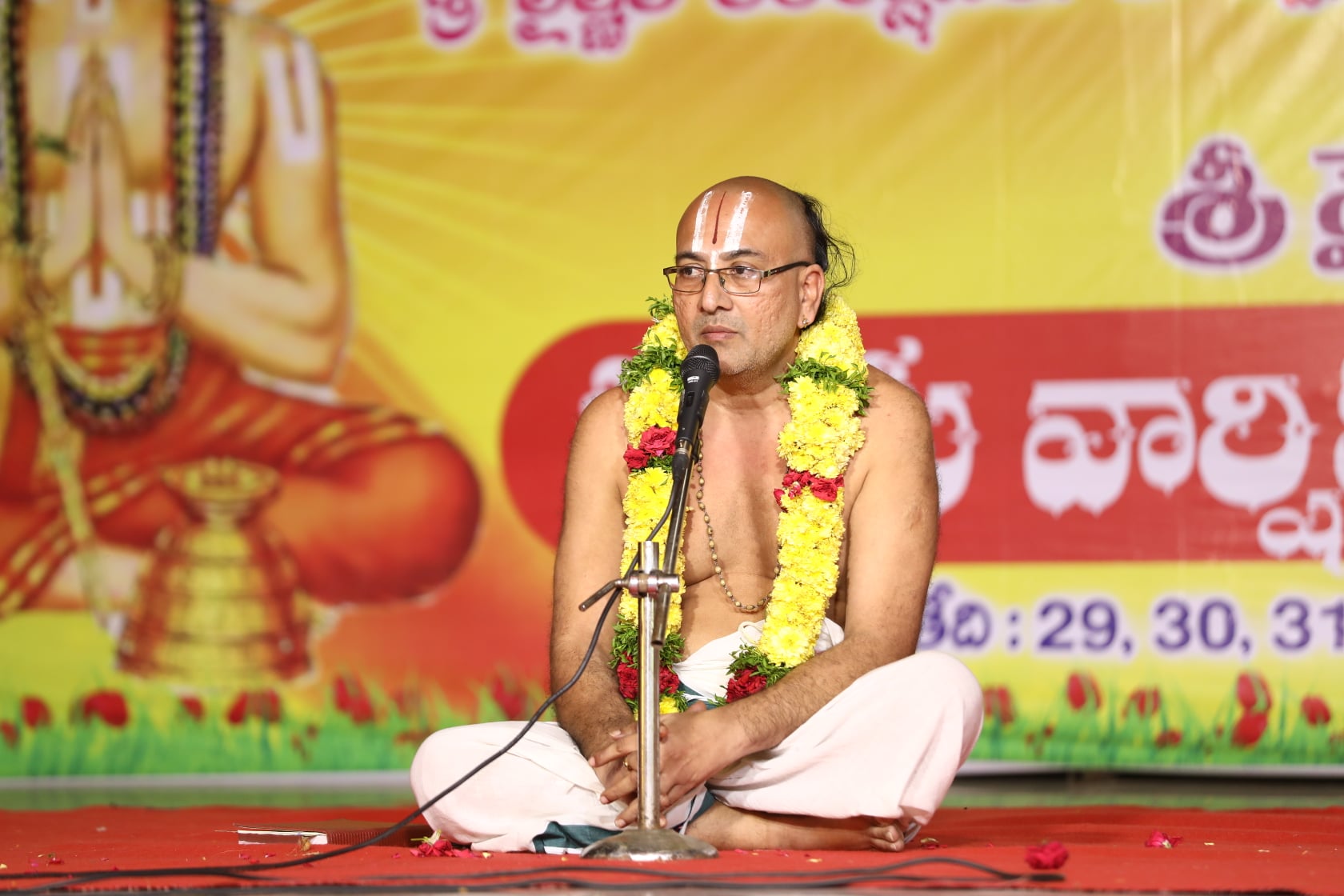
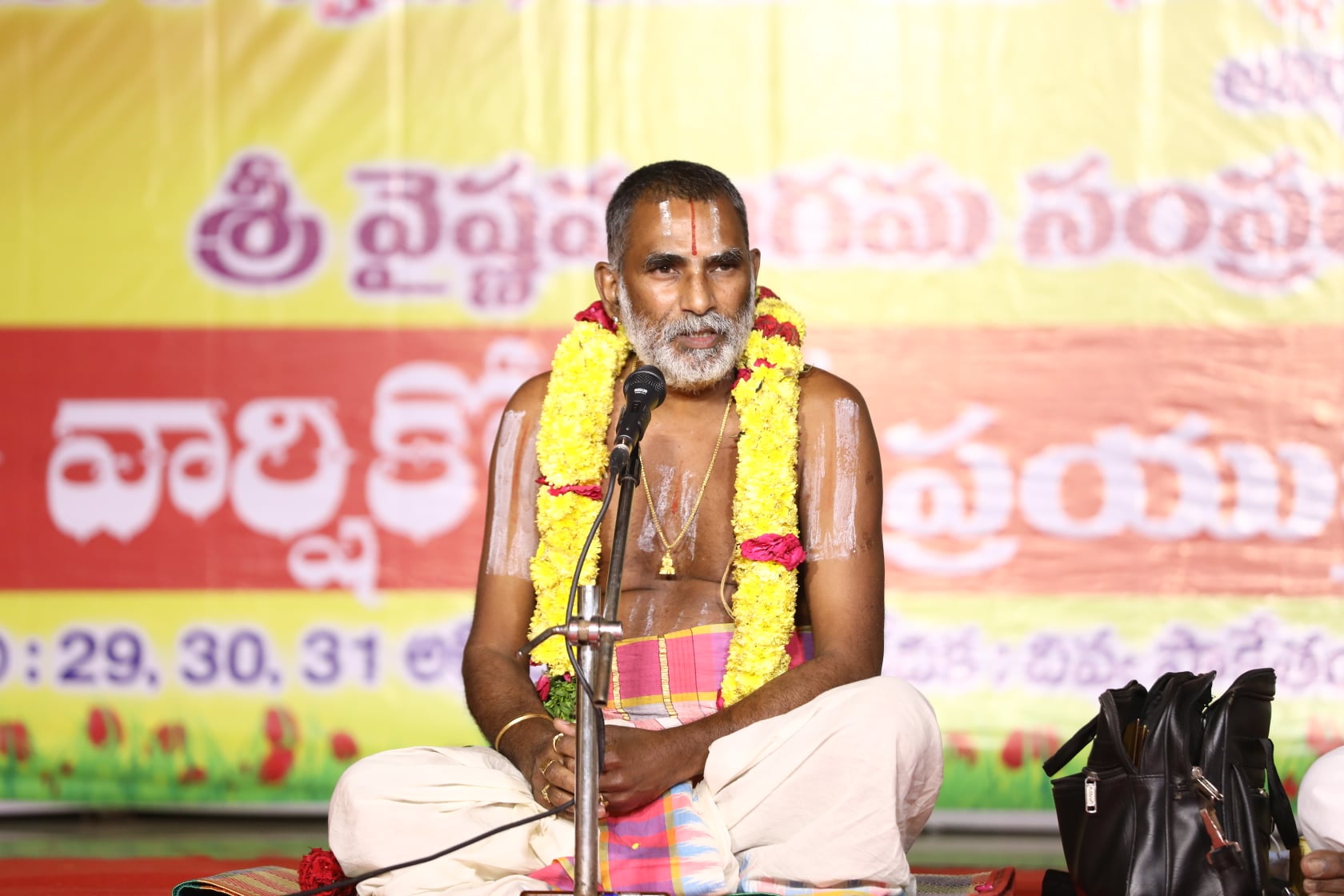
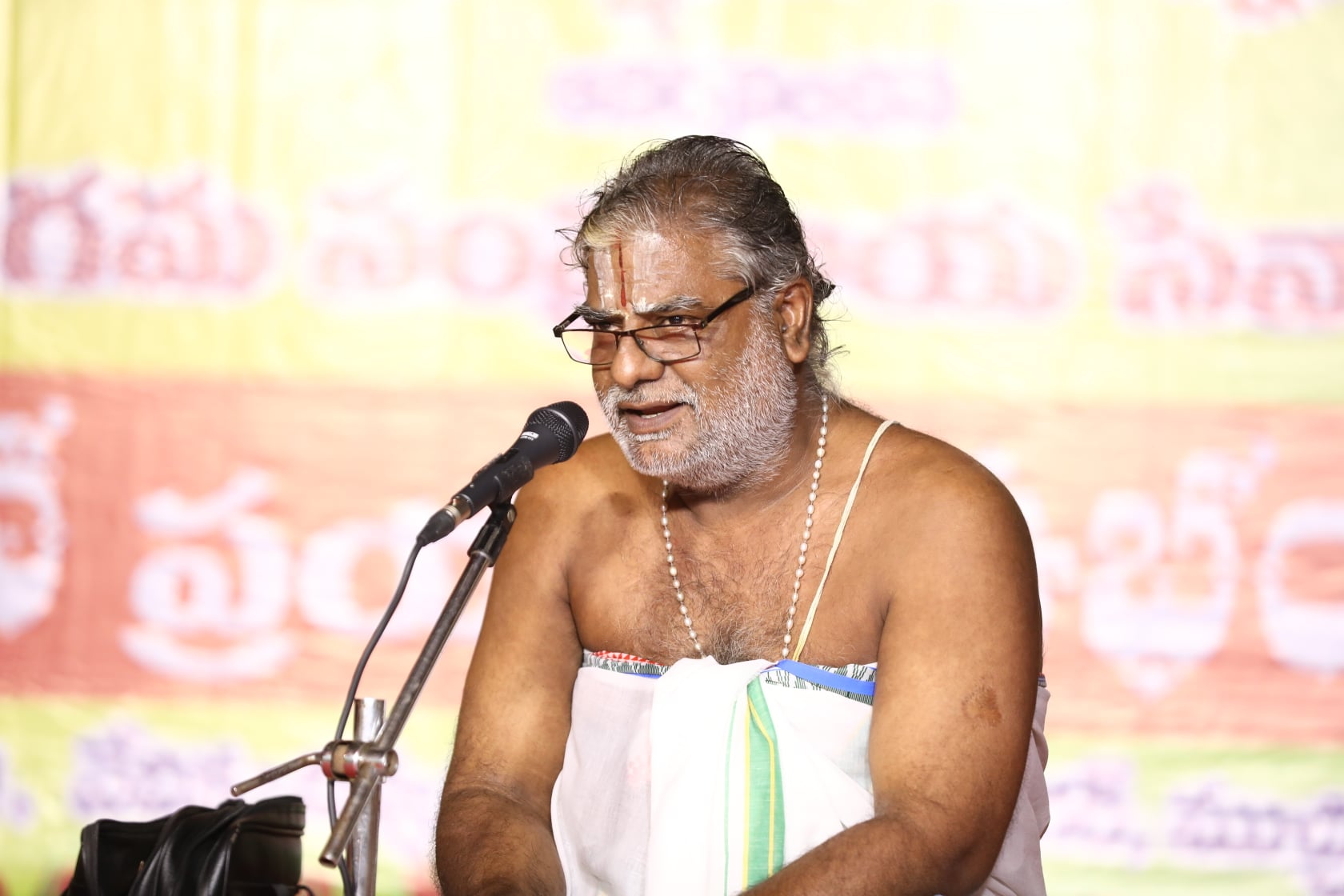
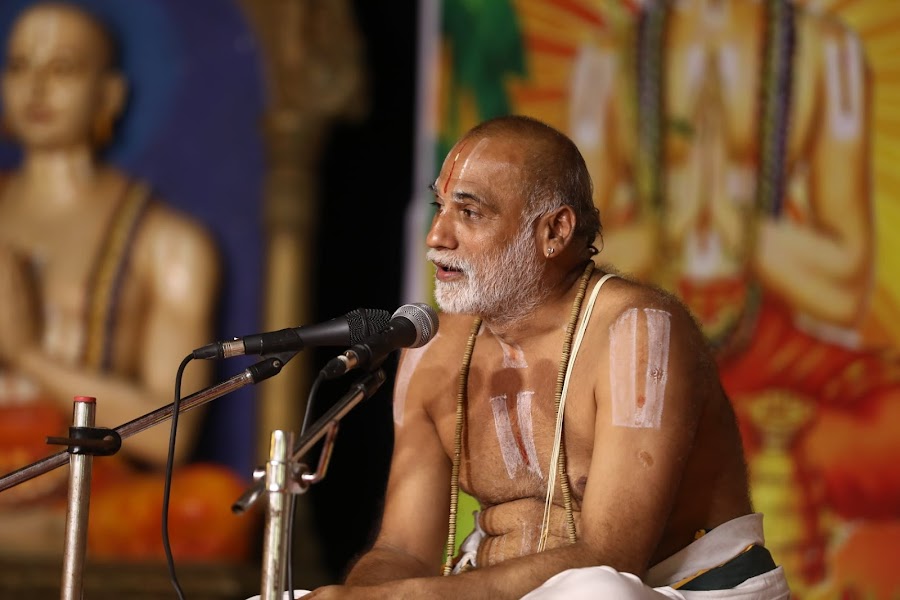
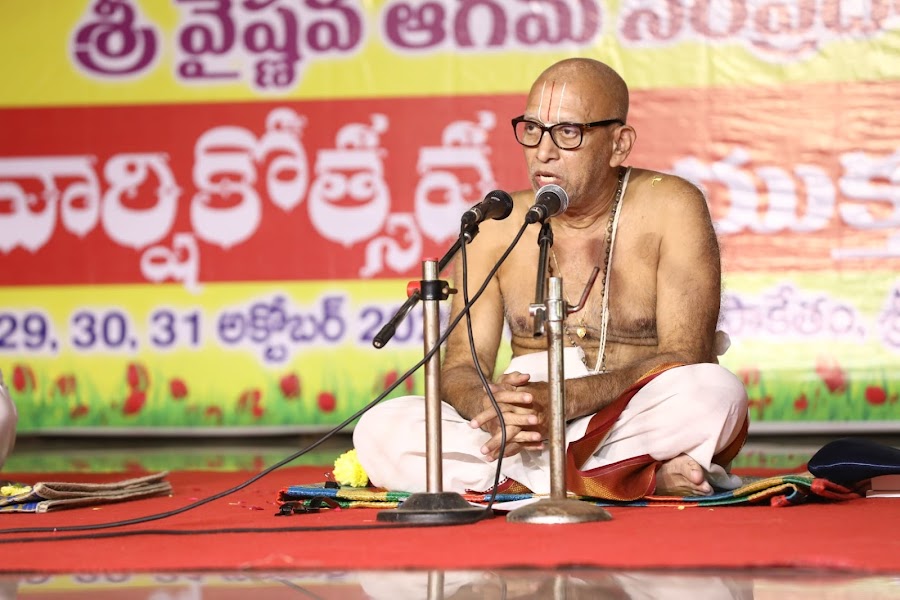
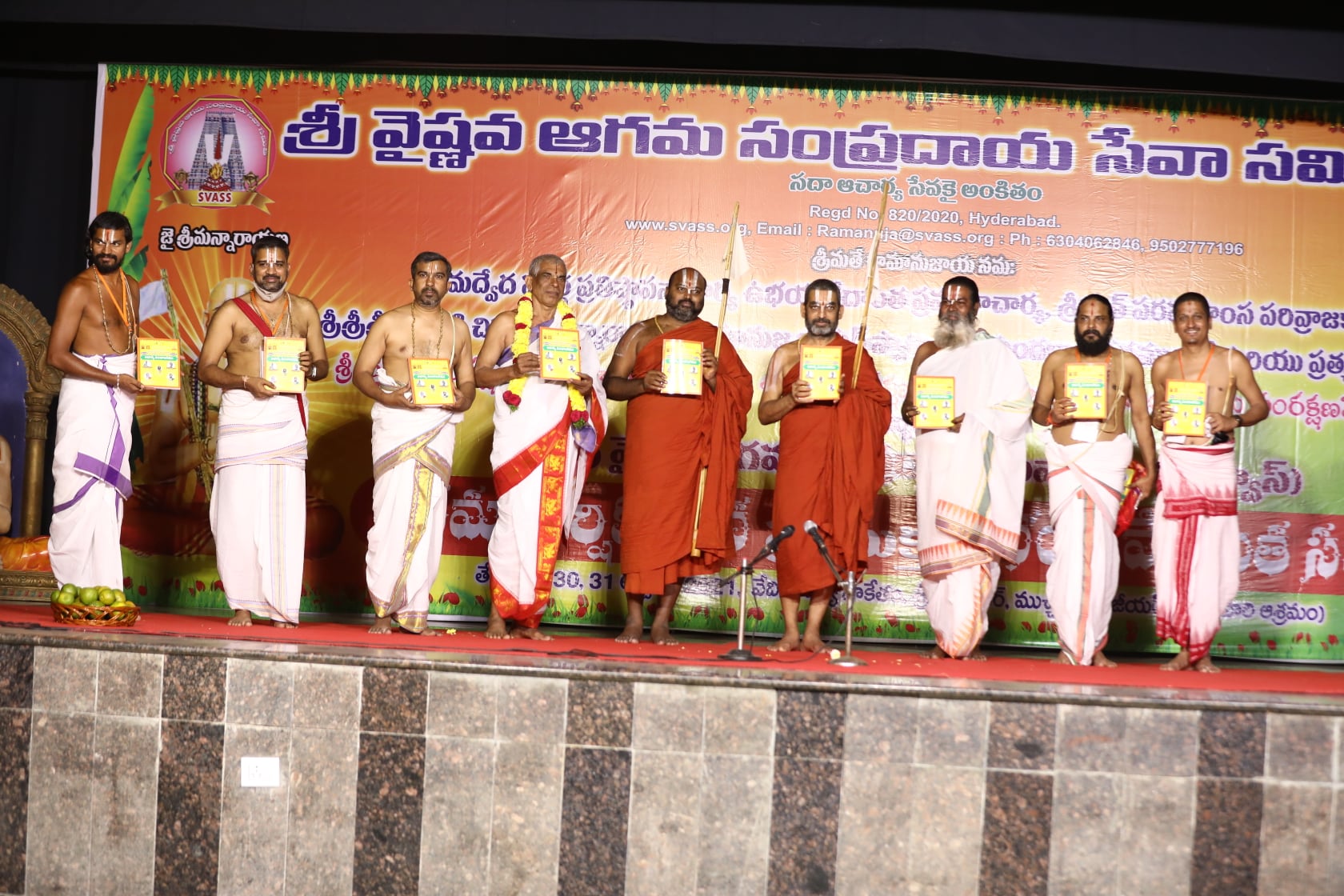



Jaisrimannaraya
jai srimannarayana! adiyen ramanujadasan
JaiSrimanNarayana!
JaiSrimanNarayana!!
JaiSrimanNarayana!!!
Humble koti pranaam’s swamiji!
Jai Srimannarayana… great gurudeva namo namaha…
Good sir
Jai sreemannarayana
Jai srimannarayana
Jai Srimmanarayana!! Adiyen Ramanuja Dasini
Jai Srimmanarayana!! Adiyen Ramanuja Dasini 🙇♀️